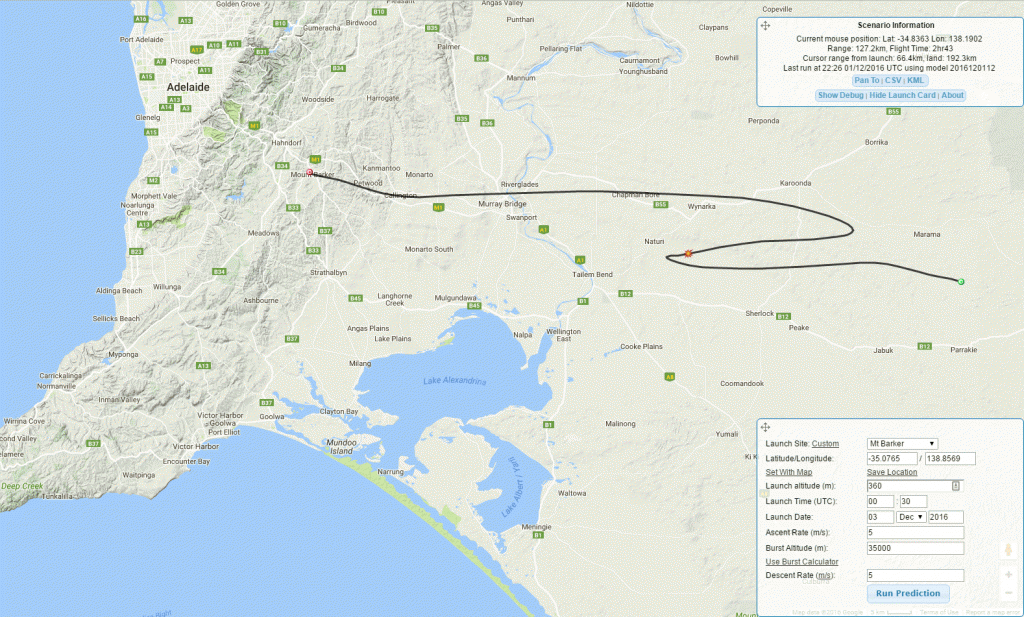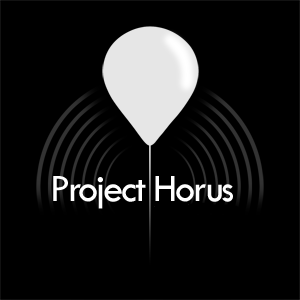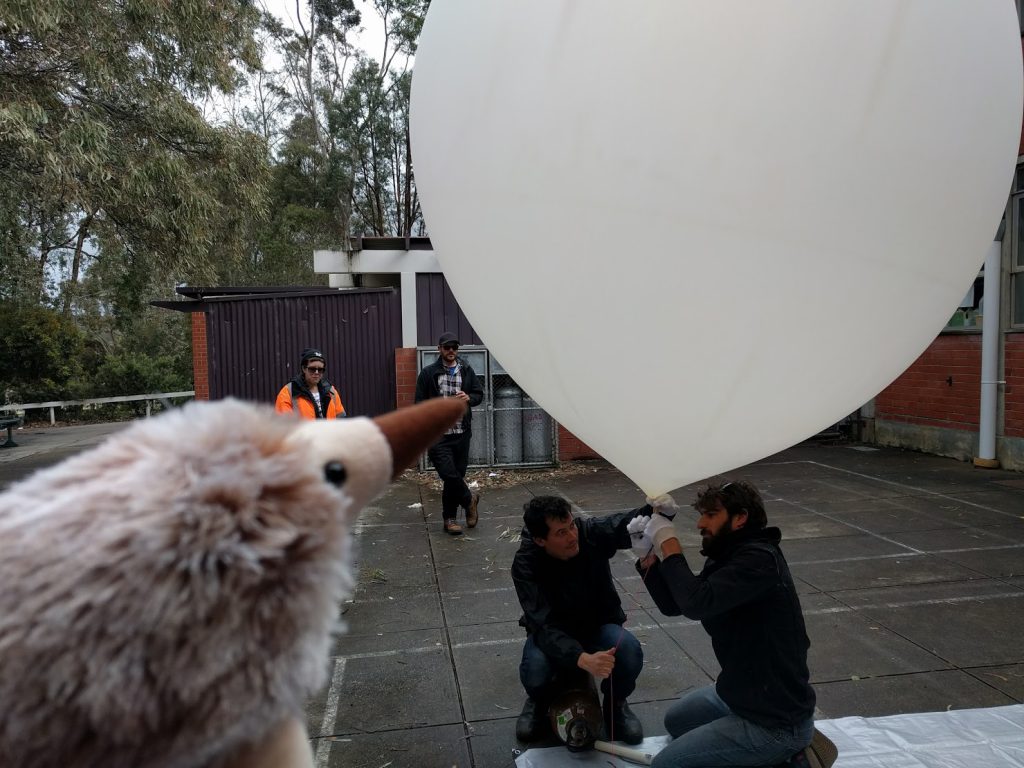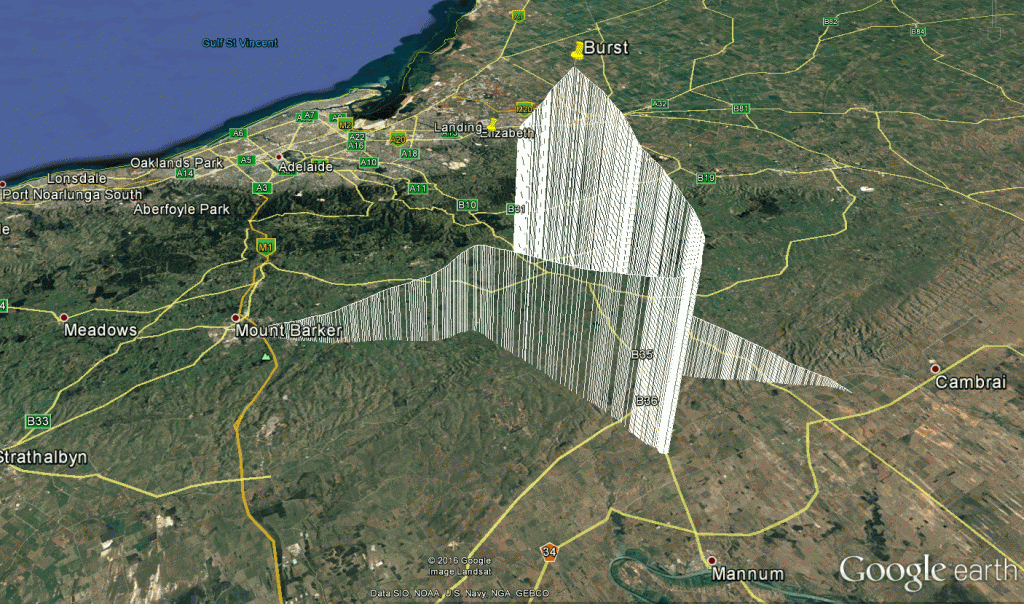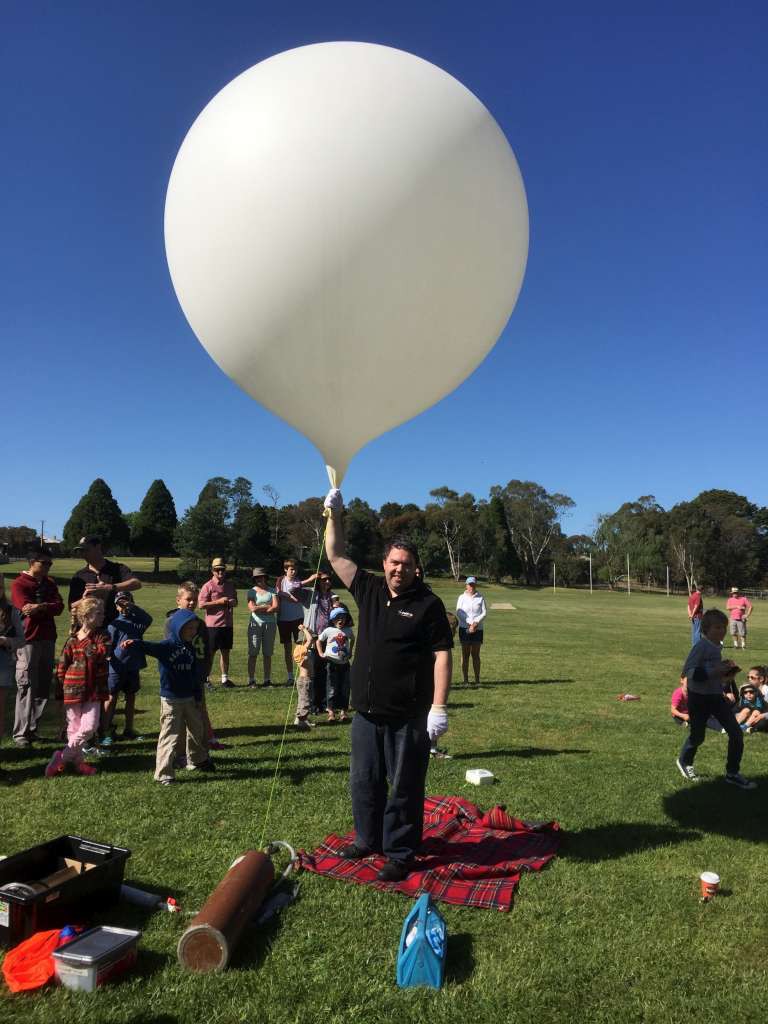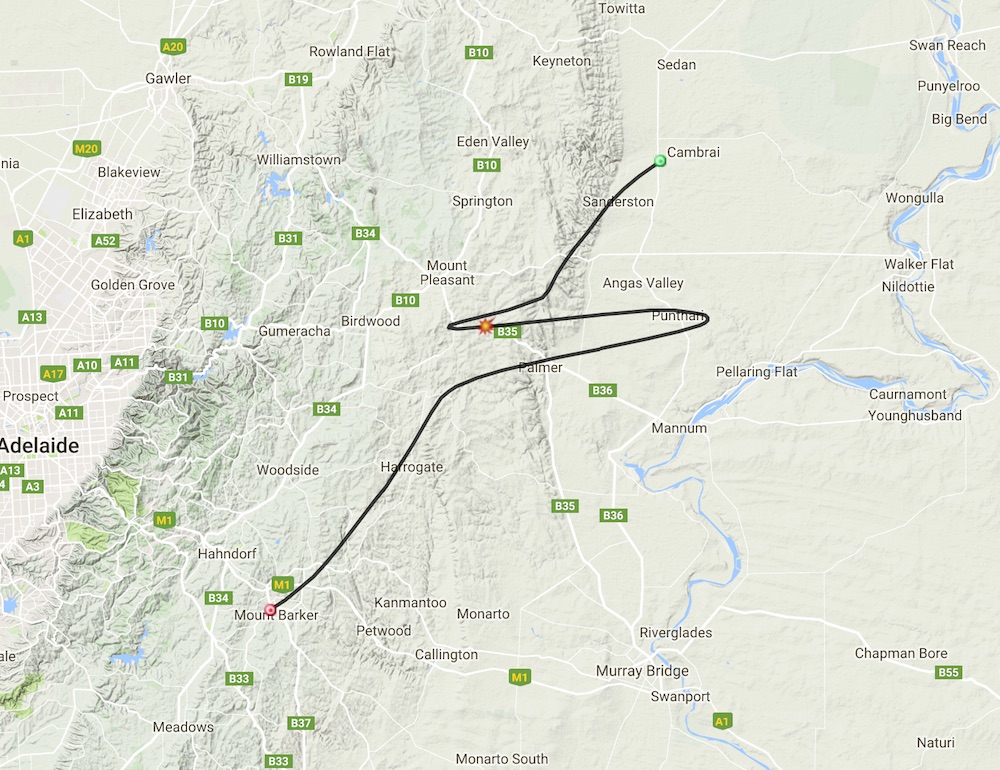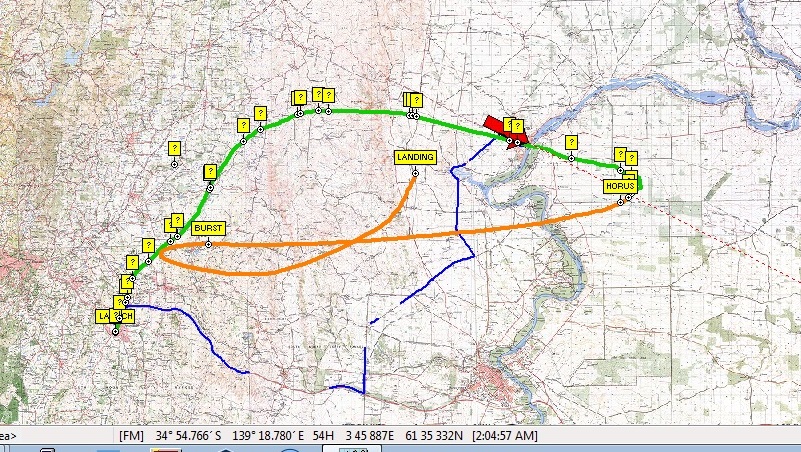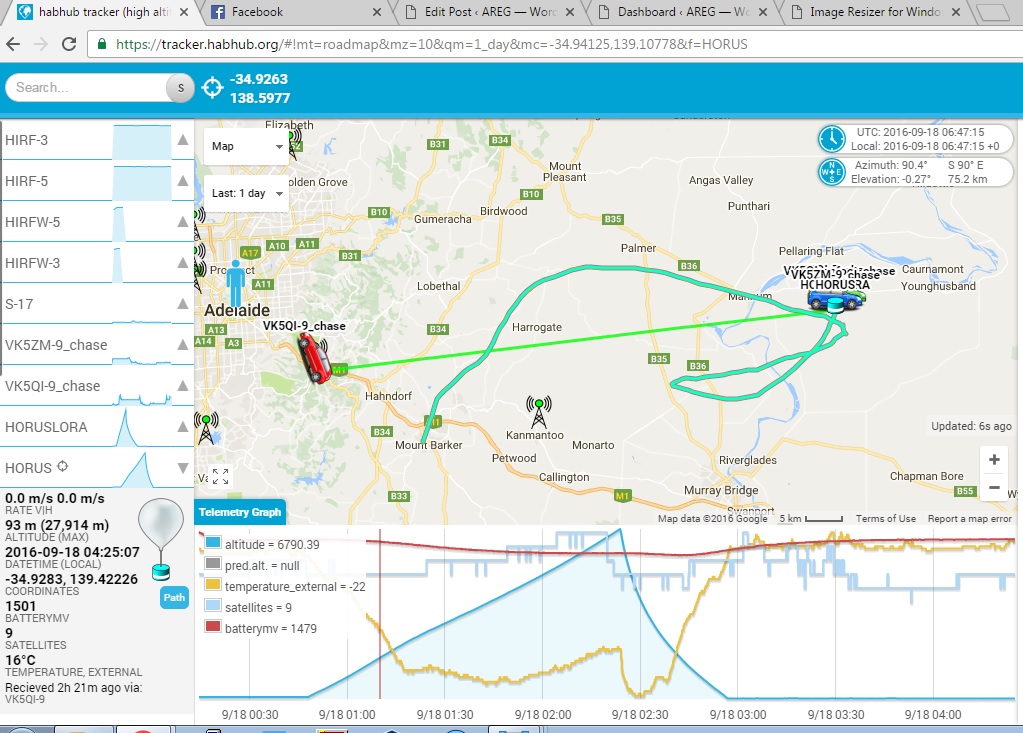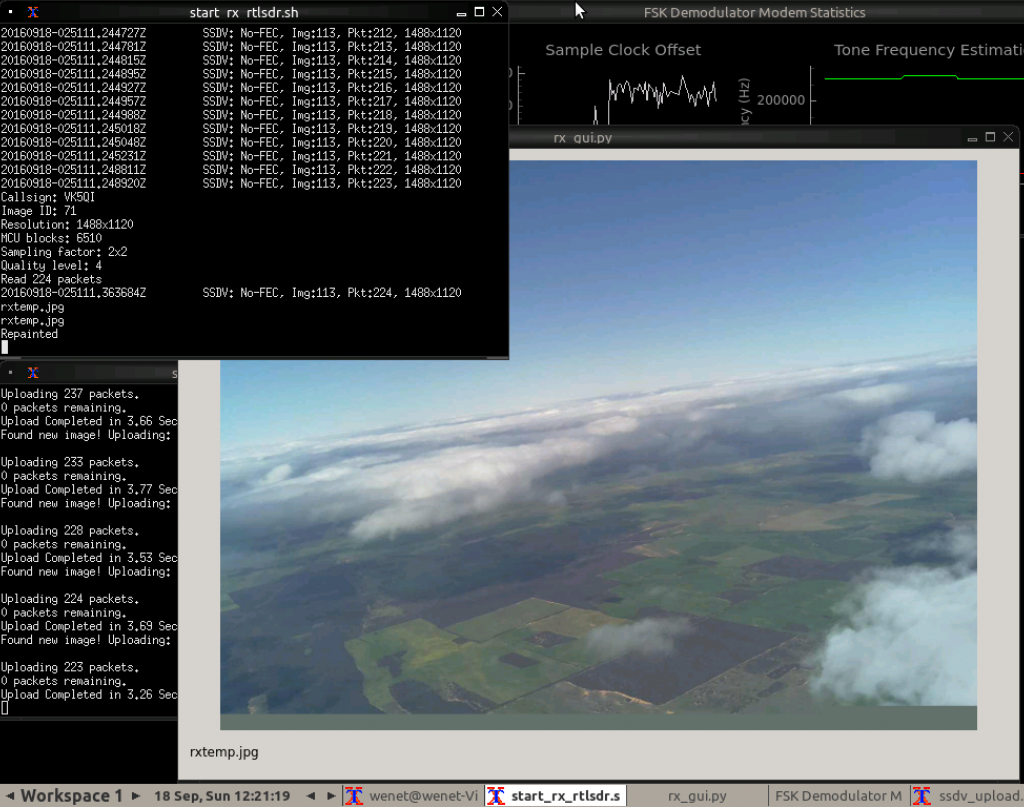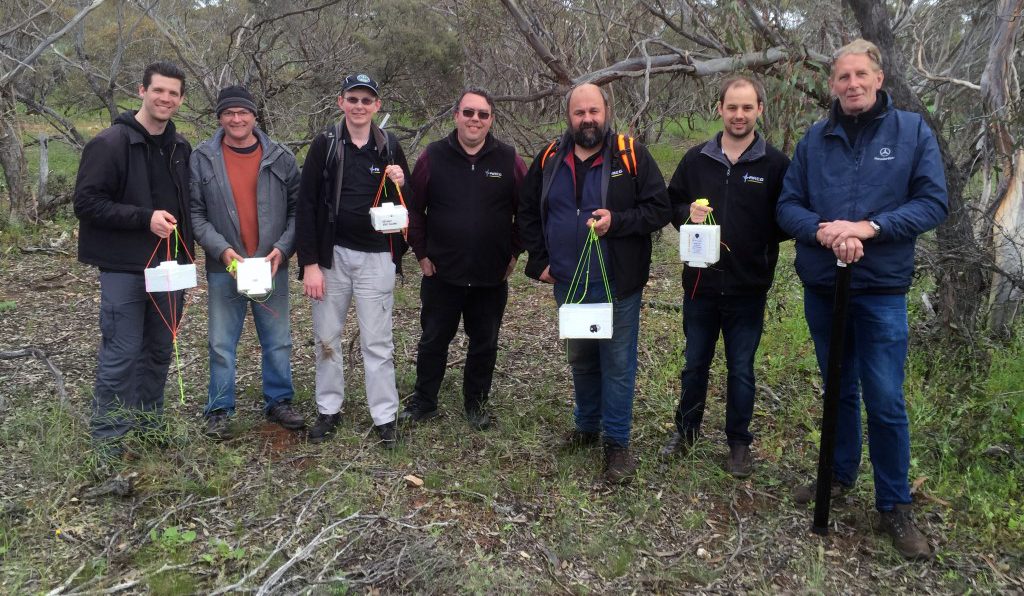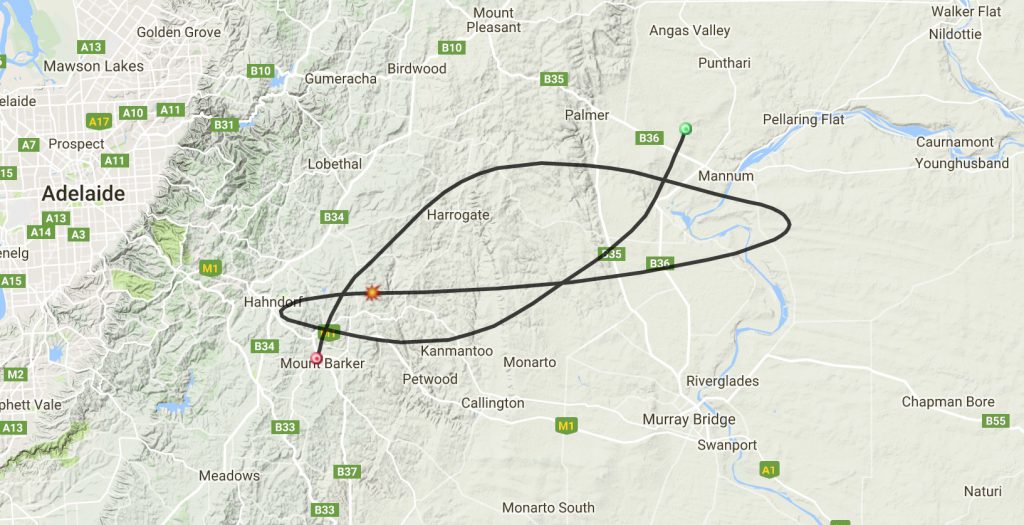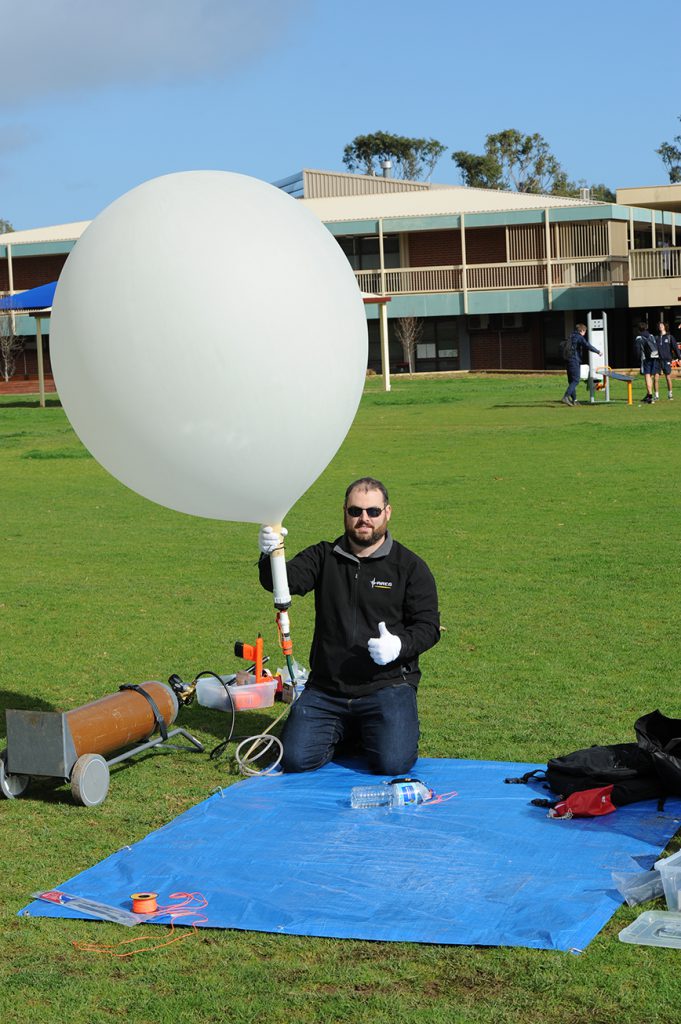Launch Preparations to fly Anstey the Echidna into space are continuing. Her spacecraft is ready and flight plans are being reviewed ready for liftoff.
Anstey the Echidna into space are continuing. Her spacecraft is ready and flight plans are being reviewed ready for liftoff.
The AREG group who are flying this payload for the Tea Tree Gully Library have been working feverishly in the background building the payloads to carry Anstey on her epic journey. Mark VK5QI has worked some long hours to get everything ready, as has many members of the Amateur Radio Experimenters Group looking to receive as much of the SSDV imagery as possible.
Launch is planned for 11:00am Saturday (barring unforsean circumstances). The Amateur Radio Experimenters Group will have both it’s launch and chase teams on site from 10:00am to make the final preparations.
The flight track prediction is also now firming up. It looks like it will be a long drive, with landing predicted to be north of Parrakie on the Adelaide to Pinnaroo road. Stations as far away as Melbourne should be able to hear the telemetry beacon as the balloon reaches apogee.
You can track the balloon payloads via one of the channels below:
- Standard RTTY Telemetry: 434.650 MHz, 100 baud ASCII-7N1
- Wenet Imagery payload: 441.200 MHz
This is the live track imagery.
How can you get involved?
The Horus telemetry system is based on a “distributed listener” principle with multiple receivers listening for the same frames, increasing the chance of picking them up correctly. Amateur Radio operators across SE Australia are encouraged to set up their 70cm receivers and tune to the 100 baud RTTY telemetry frequency of 434.650MHz.
are encouraged to set up their 70cm receivers and tune to the 100 baud RTTY telemetry frequency of 434.650MHz.
The more people we have collecting telemetry data and forwarding it to the internet, the greater the chance of us recovering the payloads!
Instructions of what software to download and use to decode the telemetry and forward it to the Internet can be obtained from the habhub,org website.
Live Online Tracking Links
- You can track the balloon and chase car positions using the HabHub Tracker, available here online via the Internet
- LIVE IMAGES from the experimental imagery payload will be available at this link.
Also DONT FORGET, there is another balloon flying on Sunday for Launchbox – details to follow!




